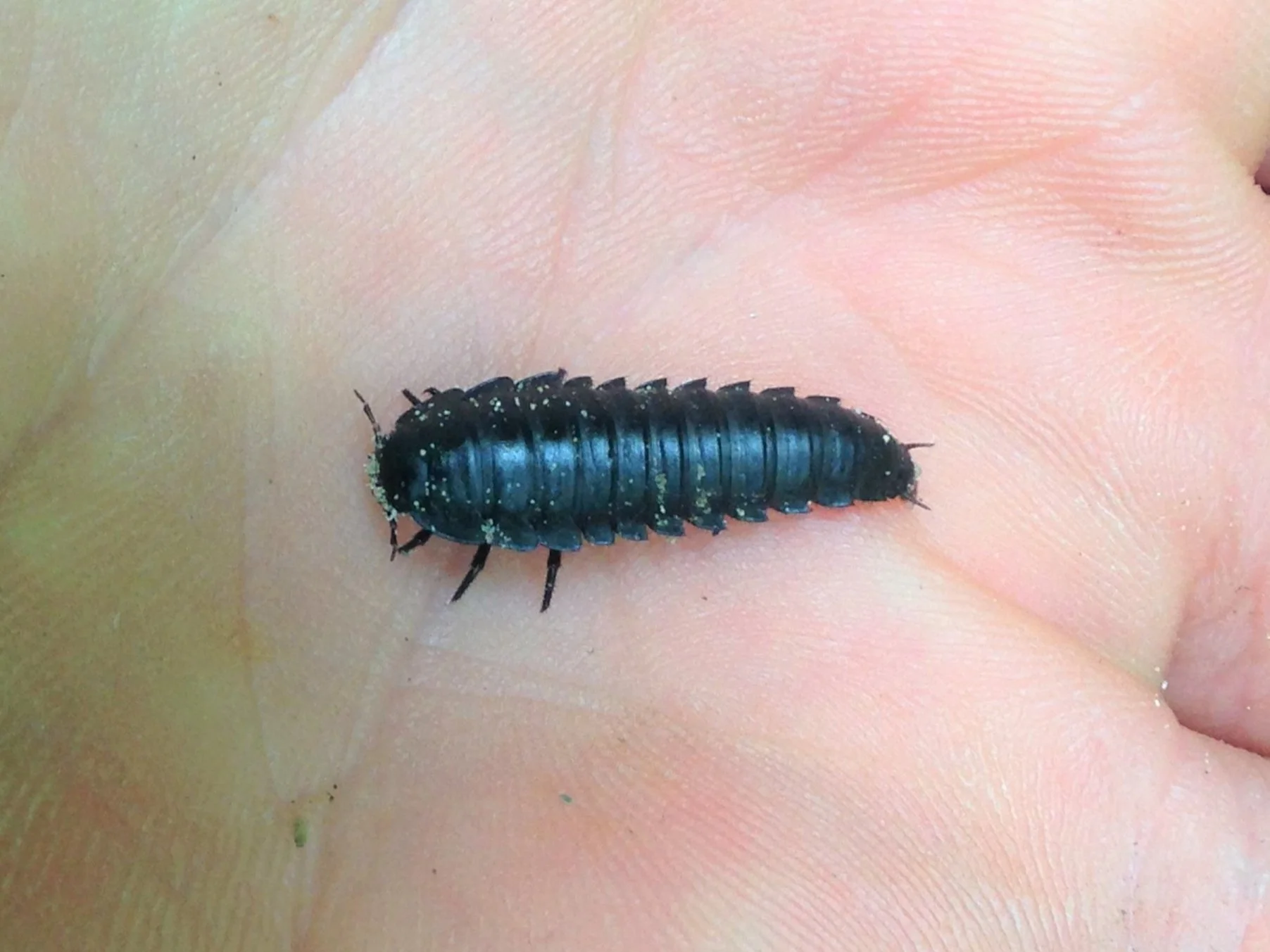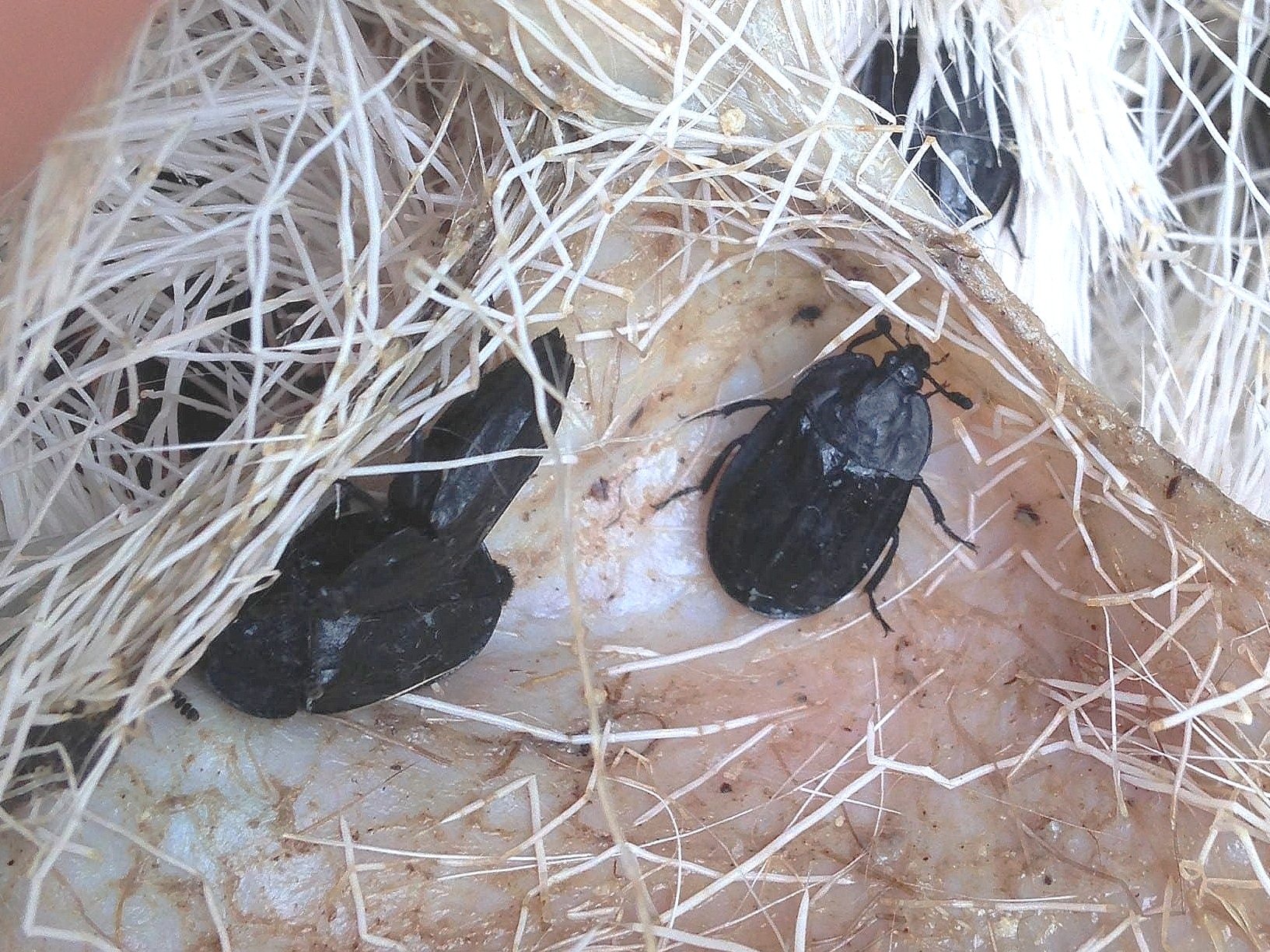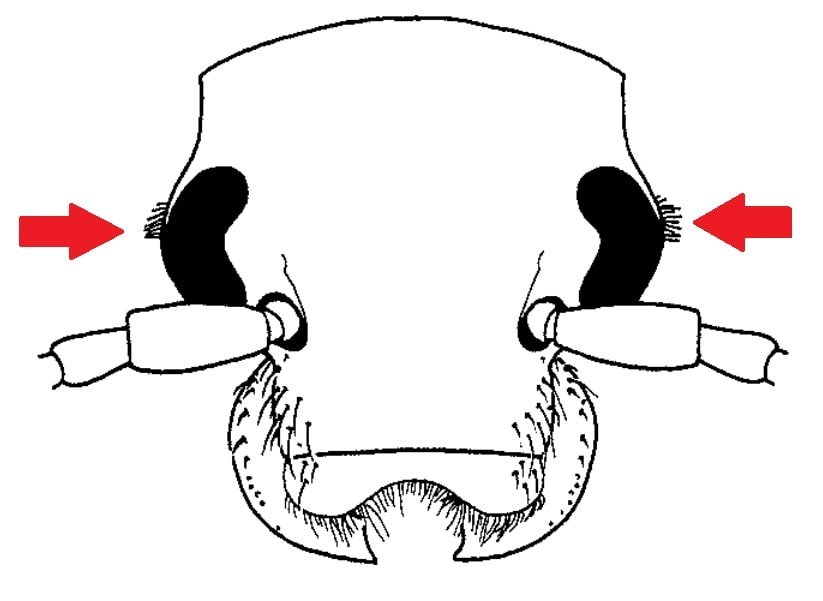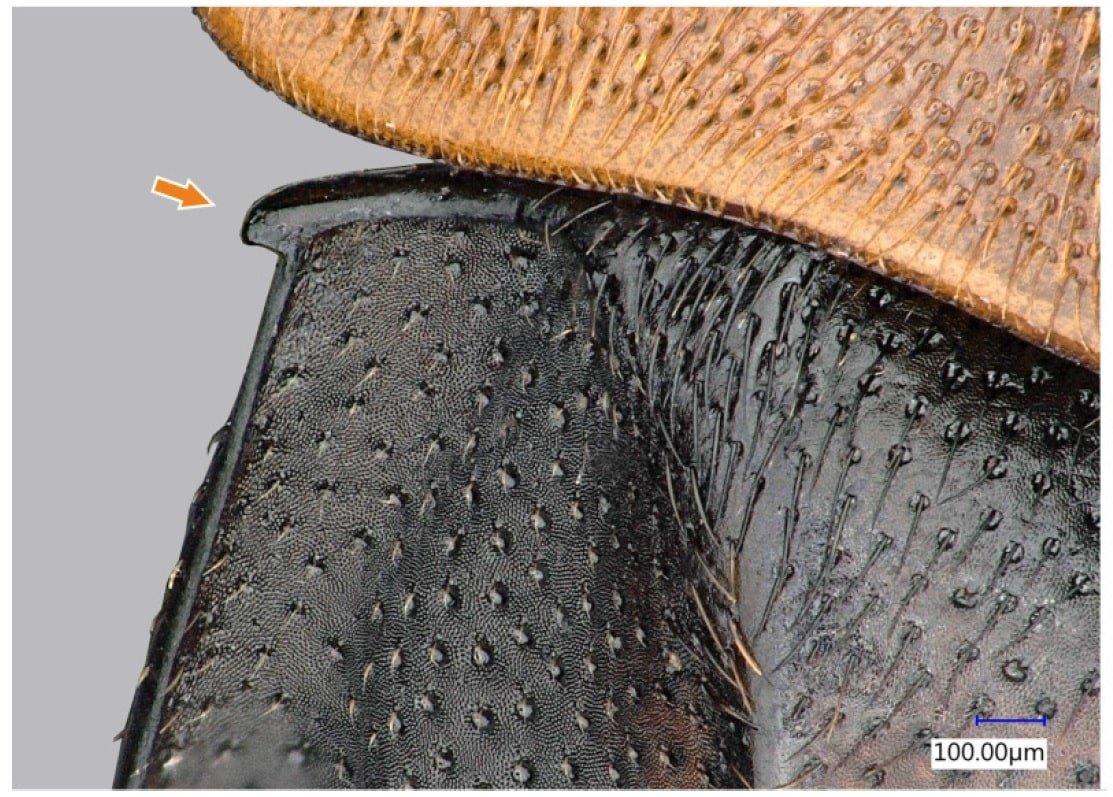Necrophila americana
Female N. americana @ Stone rd E, Guelph Ontario, 2022.08.31.
Males tend to have rounded bottoms of their elytra while females tend to have the slightly prolonged bottoms (elytral apices). Modified image from The carrion beetles (Coleoptera: Silphidae) of Nebraska by Brett C. Ratcliffe (1996).
Necrophila americana. This phrase isn’t a comment on the extinction culture of the North American colonial project, but instead it is the scientific name of a species within my favorite crew of insects : Carrion Beetles! The simple and concise common name of the particular species highlighted in this post is the American Carrion Beetle. Pretty easy to remember and pronounce.
I love these little dudes. This fellow is part of the same family, Silphidae, that the Necrophorus tomentosus is a part of but is classified within a different subfamily, the Silphinae (as opposed to the Necrophorinae of the N. tomentosus). What makes this beetle kind of special is that this is the only member of the Necrophila genus to inhabit Turtle Island/North America. The rest of the 20 odd species live in Asia and India.
This awesome member of the Carrion Beetle crew is recognized by their yellow pronotum with black ghost-like blotch, or “maculum” in the middle. The rest of their body (head, elytra, and legs) is black with a rippled texture. They range in size from 12 - 22 mm long with the females perhaps being slightly larger as males tend to have rounded bottoms of their elytra while females tend to have the slightly prolonged bottoms (elytral apices). They are known for laying their eggs on dead animals and then wandering atop and below said dead animal consuming the newly hatched larvae of any of their competitors (flies, other Carrion Beetles, etc.), though they may also consuming scat, but I wonder if that is just to access the dead animal bits left over in the scat?
American Carrion Beetle adults breed in the late Spring and early Summer and the first adults appear mid-late May in Ontario. The N. americanus eggs, which are 3.12 mm long, creamy coloured with greenish hue with an ovoid shape, are laid directly on a carcass (cool). Similarly to many insects, yet unlike other carrion beetles in the Nicrophorus genus (sometimes known as burying beetles as they commonly bury the carcass’ they find), N. americana tend to leave the eggs on the carcass and do not tend to their young. Once their eggs hatch it takes about 10-12 weeks to reach adulthood. They overwinter as adults and there is only one generation per year. In the publication The Carrion Beetles of Nebraska by Brett C. Racliffe (1996), there is mention that the adult American Carrion Beetle had been observed feeding on maggots at carrion, while others noted that both adults and larvae had been observed feeding on decaying flesh, usually near softer parts of the dead animal, as well as excretions. The larvae mostly fed on “the dried remains of hide, sinew, and shreds of flesh that are left after the dipterous larvae have finished with the carcass.” I am truly not a fan of horror films or gore, but when it comes to real life survival practices of wildlife, I am enthralled! In Insects by Stephen Marshall (2006) he mentions that the American Carrion Beetle usually inhabits carcasses that are older and too dry for a maggot (fly larvae) to consume, which is interesting to consider the specific niches of various carrion eaters.
In regards to the larva of N. americana, they can grow to 24 - 25mm long, which like a few insects I have encountered, are larger than the adults. I believe I have come across them before while exploring a Eastern Coyote (Canis latrans) den at Allen Park Conservation area. I was rooting through some skeletal remains of Wild Turkey (Meleagris gallopavo) thigh and Eastern Cottontail (Sylvilagus floridanus) foot. While flipping these remains a couple of larvae were seen crawling on the surface of the sandy soil below. I picked up one and took some photos before returning them to the carcass.
Necrophilus americana larvae found at Allen Park Conservation area, 2022.07.17.
I have read that N. americana is diurnal, and that they mostly hang out in marshy or forested areas but I found one paper from New Jersey that concluded that they prefer field and meadow habitats, so maybe they like all three? Marshes, meadows and the woods? I have also found them along roadsides adjacent to forest habitats, munching away at the roadkill there. They can be found as far South as Florida and Texas, and has been recorded on Inaturalist as far North as just outside of Flin Flon on the Saskatchewan/Manitoba border, which is approximately the 54th parallel North, which is a lot further North than many sources say they are… but I guess there is dead stuff everywhere, and highways are buffets and make for easier travel. One thing I’ve noticed in the field is that N. americana prefer larger bodies of carrion than the Necrophorinae or “burying beetles”. I would guess that this is because the Necrophila americana doesn’t take up burying the dead things they find so they don’t have to worry about the workload of trying to burying something huge like a Raccoon, compared to the dead Short-tailed Shrews (Blarina brevicauda) I would normally find the burying beetles with.
Below are two examples of other carrion beetle species who may be confused with Necrophila Americana, or the American Carrion Beetle.
Ridged Carrion Beetle (Oiceoptoma inaequale) on White-tailed Deer (Odocoileus virginiana) hide behind Bishop Mac, 2021.05.03.
Ridged Carrion Beetle (Oiceoptoma inaequale)
Identification : All black, including pronotum, with well developed ridges running along the elytra.
Size : 8.6 - 14.4 mm
Habitat : Deciduous forests, often near water.
Margined Carrion Beetle (Oiceoptoma noveboracense) found in a roadkill Raccoon (Procyon lotor) skull near Arkell Springs, 2018.04.27.
Margined Carrion Beetle (Oiceoptoma noveboracense)
Identification : Red-orange margin along the outer edges of pronotum, with broad black blotch between - blotch reaches the base of the pronotum. Black ridged elytra.
Size : 10.0 - 13.5 mm
Habitat : Deciduous forests and grasslands.
These three species of carrion beetle are so similar, but what sets them apart, beyond colour, is the genus. Necrophila translates to “lover of the dead” or “lover of dead stuff”, and Oiceoptoma, well, I just can’t seem to find a proper etymology. My own reading would be “home within the corpse” from “oikos” home, household, family, origins of the English word “eco-”, and “ptoma”, also from the Greek, meaning the dead, a corpse, or body. Pretty metal.
One way to differentiate these two genera, Oiceoptoma and Necrophila from other genera in the Silphinae subfamily are long hairs just behind the eyes, a little like eye lashes. Another way to differentiate the two genera are that Oiceoptoma beetles have a tiny little projection called a tooth or “denticle” emerging from the top outside corner of the elytra. Now I have zoomed in and edited my photos in an effort to see this denticle projection, but I can’t find it with my limited photographs. It will certainly be a characteristic to look for this coming Spring and Summer as I sometimes find dead carrion beetles who don’t move much, allowing me to take more detailed photographs.
Anterior/front view of the head of Oiceoptoma inaequale showing row of stout setae/hairs behind the eyes, from The Carrion Beetles of Nebraska.
Close up of elytral tooth or denticle from the paper “Oiceoptoma tangi (Coleoptera: Silphidae: Silphinae), a new species of carrion beetle from eastern China”
I am still curious as to what the whiteish bloom or discolouration at the base of the elytra is all about. I thought I had read something about it, but can’t seem to find it anymore. I would also like to pay attention to mating pairs a bit better as there seems to be some interesting “mate guarding” practices where the males grasp the females antennae while he is mounted from behind, and will not let go until eggs and larvae are present on the corpse they have mated on.
Curiosity never ends and I am very intrigued by these small decomposers. They fill my heart and make me happy when I find them. I hope to learn more and keep digging in every time I find them crawling around, atop, and under rotting corpses in the heat of the Summer. Can’t wait.
To learn more :
Ratcliffe, Brett. The carrion beetles (Coleoptera: Silphidae) of Nebraska. Bulletin of the University of Nebraska State Museum. 13. 1-100. (1996).
Insects: Their Natural History and Diversity by Stephan A. Marshall. Firefly Books Ltd., 2006.
Shubeck, Paul P. “Habitat Preferences of Carrion Beetles in the Great Swamp National Wildlife Refuge, New Jersey (Coleoptera: Silphidae, Dermestidae, Nitidulidae, Histeridae, Scarabaeidae).” Journal of the New York Entomological Society 91, no. 4 (1983): 333–41. http://www.jstor.org/stable/25009379.
University of Wisconsin BioWeb page on Necrophila americana
Louisiana State University Insect Identification Series on N. americana
The carrion beetles of Canada and Alaska : Coleoptera: Silphidae and Agyrtidae by Robert S. Anderson and Steward B. Beck
Why is this male carrion beetle “biting” one of the female’s antennae?, from Beetles in the Bush blog by Ted C. Macrae
Male N. americana, found on dead Blarina brevicauda, 2020.10.07.








